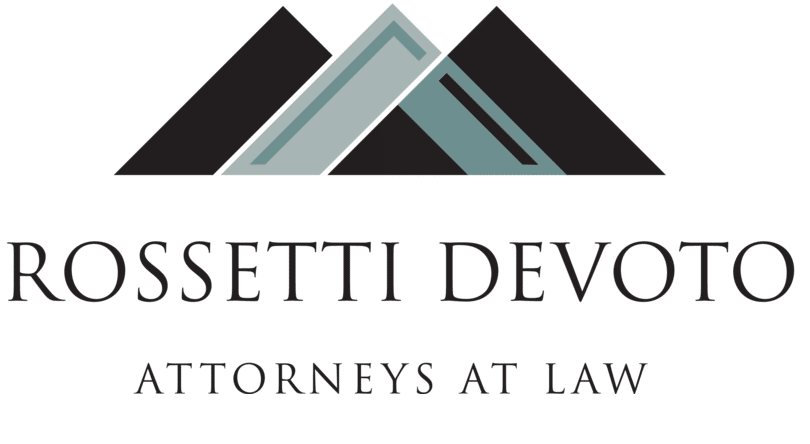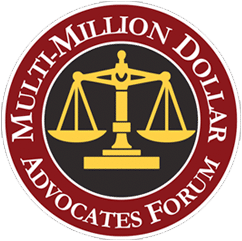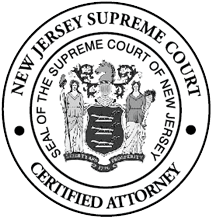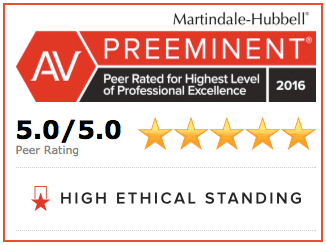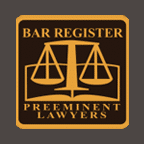The Art of Direct Examination
The Art of Direct Examination
Presented for:
National Business Institute
Cherry Hill, New Jersey
January 23, 2007
Presented by:
Louis J. DeVoto, Esquire
Rossetti & DeVoto, P.C.
20 Brace Road
Suite 115
Cherry Hill, NJ 08034
856-354-0900
856-354-0920 fax
www.RossettiDeVoto.com
DIRECT EXAMINATION – AN IMPORTANT BUILDING BLOCK TO YOUR CASE FOUNDATION
Direct examination is one of the most overlooked elements of a jury trial. Trial attorneys will often suggest that opening statements, cross examination and closing arguments are what win jury trials. But the case in chief, direct examination, is where you prove the case. If you can’t prove to the jury that your client should win after direct examination of each witness, then you have no chance at winning at all. This is regardless of how well you cross-examine the opposition or how well you deliver in closing. Simply put, the foundation of your case is built in direct examination of your own witnesses. This article will address how to thoroughly and effectively present your case in the direct examination so that the jury will still be listening when you do your killer cross and perform your powerful closing.
A. TIPS – BEFORE YOU BEGIN
Regardless of the case, and before you begin preparation for direct examination, there are several tips that can be useful in every direct examination and that apply to all cases. You have heard the saying, “you can’t know where you’re going until you know where you’ve been.” Well direct examination is just the opposite. “You can’t know where you going unless you know where you are going to wind up.” Before struggling to outline your direct examination, you must think about your entire case, who the witnesses will be, what documents will be in usage, what your theme will be and most importantly what your closing argument to the jury will be. Unless you know where your trial is going, you can’t get there.
I like to think of direct examination as a relay race; with each witness carrying some crucial part of the case and delivering to the next witness. Others like to think of each witness as adding to a piece of the puzzle. The end result is the same: you are trying to convey your case to the jury in an understandable and compassionate manner in order to make them want your client to win.
Rule #1: Know the Judge. It is also important to know who your judge is and what he or she will be like. You can’t conduct a good examination of a witness unless you know how the judge deals with documents, objections and evidence and evidentiary rulings.
Rule #2: Take the witness/client to the courtroom. A witness is often nervous and apprehensive about testifying unless they’ve been to court as a witness on prior occasions. Settle them down. Take time before the trial to bring your client and other witnesses who wish to join you to the courtroom so that they can see the courtroom, where they will be sitting, where the jury will be sitting, where the judge will be sitting and where you will be when you question them. Although we are routinely courtrooms, the thought of being in court and delivering testimony can be quite fearful for a witness, especially witnesses not used to speaking in public. It is important to recognize that and to put their fears to rest so they can deliver testimony in an effective manner.
Rule #3: Don’t rehearse, but do go over an outline of the testimony. It is quite helpful to a witness if they know what you intend to ask them. In addition to the order in which you are going to ask those questions. I never rehearse the testimony with the client. Often times I will do the direct examination of a witness in preparatory meetings without even telling the witness that I am doing it until I finish. If the witness performs well without thinking about it, they put their fears to rest. If the witness stumbles in certain areas, then we need only work on those areas.
Rule #4: Call as many lay witnesses you need to prove your case- but avoid unnecessary repetition. The jury wants to know everything and if you do not tell them, they will fill in the details themselves. The name for this is a “filling defect.” Your job on direct examination is to fill in as many important facts as you can so the jury doesn’t fill in the blanks with its own facts. However, in doing so, do not try to have witnesses fill in details that they don’t know or can’t support. Stick with what the witness knows and then hammer that topic until it’s clear. If you want to know what “filling defects” are looming in your case, present it to a focus group. And, they’ll let you know everything you left out.
B. FORMULATING EFFECTIVE QUESTIONS
The manner in which you ask your questions of your witness will many times dictate the effectiveness of the response. Your questions should be simple and short and be very understandable to the witness. Try not to ask questions that would allow a witness to interpret it in multiple ways. There are four types of questions that are generally asked of lay witnesses.
1. A full open question seeks an expansive and narrative response from the witness. For example “Describe what happened.”
2. A partial open question is more restrictive and directs the witness to a particular area of inquiry. For example “After the light turned red, what did you do?”
3. A closed, non-leading question does not suggest an answer but restricts the response. For example “Which side of the building was closer to you?”
4. A leading question suggests the answer and can be utilized on facts that are not contested. For example “Your car is the blue one, correct?”
The most effective direct examination will often utilize all four techniques in asking questions of a witness. An open question will allow the witness the freedom to explain the events in their own language; often being able to look at the jury and use a tone that is more natural to the witness. This provides the best opportunity to connect with the jury. The challenge for the attorney is controlling the witness as they can often get into areas that you did not intend to bring up at a certain point of the examination. The closed end questions are effective when you want to highlight a specific point.
For example, “What color was the light, red, green or yellow? This allows a clear and unmistakable response to a question without having it buried in a narrative format. The downside to closed end questioning is that it does not allow the witness to talk and to develop a bond with the jury. In sum, too many open-ended questions will create a rambling effect with little focus or direction and too many closed end questions create a cold and distant witness. The key is to utilize each when appropriate for your case.
Another important aspect of conducting a direct examination is listening to the answer. It may sound obvious but many examiners are ready to ask their next question as soon as the witness begins to answer. I like to treat direct examination like a stream or a river. You cannot force it where it does not want to go. Rather the examiner should have a general topic outline of matters that need coverage and dealing with on direct examination. And, they must be ready to “go with the flow” of the witness’s testimony, oftentimes making last-second adjustments to keep the flow going toward the end result. This is why an outline approach is a better method than writing out questions for each witness.
The “segway” is a most important tool in aiding the witness and the jury to better hear and understand the testimony. A segway is that important sentence that tells the listener where you intent to go. For example: “Now Mr. Smith, I want to talk a little bit about your personal medical history before you got an injury, okay? The segway is especially important for witnesses who will be on the witness stand for more than 30 minutes as their testimony often crosses into various topics. Typical segways include, education, medical history, the incident, the day before/after the incident, the lifestyle before an incident, the lifestyle after an incident, prior criminal records, prior injuries, subsequent injuries, etc. It’s a simple technique that we use in everyday conversation. Use it to aid the witness and jury.
C. PRESENTING TESTIMONY IN A NATURAL AND LOGICAL MANNER
There are generally two schools of thought on how to present testimony on direct examination. One school of thought is that you present direct examination in chronological order. Another school is to present the testimony by topic in the order of importance. There is no right or wrong answer to which method is better and often times both methods should be utilizable, sometimes using both methods on one witness. Many times it will be dependable on what and when does witness experiences examination during trial.
For instance, if the last witness in a trial is testifying about a relatively small but important area of the case, the topic method would be more advantageous. Conversely, with an early witness in a case, you may want to go chronologically in order to allow the jury to understand the case in a coherent manner. It is imperative for the examiner to know ahead of time just what each witness has to offer in the case and how the story is best told through those witnesses. If the examiner does that with each witness before the start of the trial, the answer as to whether to use the chronological or topic method will generally become self-evident.
D. ASSISTING THE WITNESS IN PERSUASIVELY DELIVERING TESTIMONY
The goal of the trial lawyer is to make each witness as effective a witness as they can be. However, not all witnesses are created equal. Don’t have blinders on. Be cognizant of the fact that some of your witnesses will be better than others, regardless of how well you think you have prepared each. There is going to be, in every case, a best witness and a worst witness. The key for you is to know who those two witnesses will be.
Try to design your case and plan accordingly. If the witness is lousy, get them on and off as quickly as possible without conveying that they are bad witnesses. If they are sensational witnesses, make sure that you treat them as such and schedule them accordingly. Put them in a place of prominence (usually first or last). Avoid burying them in the middle of your case or putting them on the stand at the end of a long day of testimony when the jury experiences tiredness.
Where does the examiner go in direct examination? Some sit, some stand, some use a podium. I have seen it all and I don’t think it makes much of a difference. The thought for sitting is that it becomes more conversational and allows the jury to focus on the witness and minimizes the lawyer. However, some judges will not let you sit so beware. The argument for the “stander” is that it is a more powerful method allowing the examiner to inject more passion into each question by utilizing body language and change of tone. The podium is good for those who like to stand and who like to use notes. It’s more formal and some judges require a podium if an attorney elects to stand.
Notes or no notes (aka “wing it”). Let’s face it; most attorneys are using notes in some format. Hell, they even use notes on television now including the Today Show and most evening news broadcasts. It’s no big deal to use notes. Just don’t read from them and don’t be glued to them. That’s why I believe the outline still works best. Most attorneys who are going without notes are seasoned trial attorneys who are just plain good enough to do it or are handling a witness that has only a limited area of testimony to offer. Even then, it is a reccomendation that the attorney checks his notes or file or associate before completing the testimony to make sure everything has coverage. Don’t be shy, it’s okay to say out loud for all to hear, “I just want to check my notes to make sure I covered everything.”
Where should the witness look when answering questions? It is often under dispute as to whether the witness should respond back to the examiner or should they look at the jury as they answer each question. Again, I find the most effective way tool to be a little of both. On very important issues, I believe it is best that the witness look at the jury. On standard, routine questions I think it is more persuasive if the witness speaks back to the attorney so that there is a more natural conversation between examiner and witness.
What order do I put my witnesses? The key for the examiner is to know the value of each witness before the trial begins so that the examiner can put the witnesses in an order that does the most for the case and causes the least amount of harm. I always believed in the start strong/end strong method. I certainly would not want to put my worst witness on as my first witness and I certainly would not want my last witness to be a bad witness before resting and turning the case over to my adversary.
Thus, I tend to rank my witnesses based on several factors including the nature and amount of testimony that the witness has to offer, the witness’ demeanor, the witness’ credibility, whether the witness is providing duplicative testimony, and the witness’ relationship to the case. Once I determine the order of the witnesses’ testimony, I then determine what information I need to ascertain from each witness.
I then make an outline of the exhibits that I will need to present to each witness and I meet with the witness so they know what is expected of them. And I always end my meeting with the same instruction: “While this is an important proceeding for my client, as a witness your first and only obligation is to tell the truth” You can’t imagine how many times those words get repeated at trial after a cross-examiner asks my witness what was the subject of our discussion.
It is important that the witness be told not to memorize their testimony. The witness should know the general areas that are going to be covered and should also know what the most important aspect of their testimony is to the case. The lawyer must make sure that the witness understands the most important aspect of their testimony and that they know that their testimony on that issue must be unwavering. It is also important because that is the most likely area upon which the witness will wndergo cross-examination. If a witness does not understand the most important aspect of their testimony, they tend to become argumentative on cross-examination even on mundane and mostly irrelevant issues.
For example, in a slip and fall case, I always make sure that the person who fell knows that they need to know exactly how and where they fell. Without that we are not getting to a jury. I leave the non-crucial questions (what did you eat that morning, why were you at xyz store, etc) to the witness’ own recollection.
E. SETTING UP CROSS EXAMINATION IN THE DIRECT EXAMINATION
The current thinking by most trial lawyers and most jury consultants is that it is imperative to bring out harmful information on direct examination rather than leaving it for the other side to expose. I subscribe to this theory. But before bringing out damaging information in your case, an attorney should always try to bar that evidence with pretrial motions in limine. If the evidence cannot be barred, the attorney should request a limiting instruction where appropriate. In eliciting non-favorable testimony in your direct examination, you will diffuse the cross-examination and it will allow you to put a more positive spin on the evidence.
For example in a case where your client is injured in a low impact collision where there is no property damage done to her vehicle you may wish to ask the client to describe the impact. After describing the impact you may ask your client a question regarding whether they observed the vehicles after the crash at which time your client might give testimony that “I was surprised to see that there was no damage to the back of my car based on the jolt that I took.” You may then be able to use other evidence to offset the damaging evidence.
For example, you may ask the following question “Well, Mrs. Smith, did you take your car to a body shop to get repair? And Mrs. Smith’s answer might be “Yes, I did and I learned there that the frame was bent and that my seat back had broken in the crash.” This can also be done regarding testimony from the opposing party’s expert witnesses. Questions can be asked about a defense medical exam, how long it took, what the doctor’s demeanor was and whether or not the doctor ever touched your client during the examination. By setting up the method of the examination, you have already discredited the defendant’s doctor before he takes the stand.
F. EXHIBITS
The trial lawyer needs to know what exhibits he will utilize to prove his case and which exhibits he may utilize on cross-examination. As to all exhibits to undergo utilization in direct examination, the current practice in New Jersey is to pre-mark all of those exhibits. While many attorneys designate them as pre-marked in their pretrial submissions, few actually mark them at the trial. That is a mistake. Get to trial early. Be there to converse with the clerks at 8:15 am and take care of all the things you need to do before the day’s events. Request the evidence stickers from the court clerk and mark each one of your potential pieces of evidence with an evidence sticker using the same number you used in your pre-trial submissions.
Next, make sure that you know which exhibit will undergo utilization with each witness and when will it happen during that witness’ testimony. Because direct examination is in total control of the examiner, I like to place the evidence in the exact order I intend to use it. I typically will have folders marked with an outline of each witness’ testimony, that witnesses deposition, and the documentary evidence that I intend to offer with that witness.
In general, the key to admitting any document into evidence is that it accurately depicts what it purports to represent and that it be helpful for the jury to understand or resolve any issue of fact in dispute. The examiner must be mindful to think about how the opposing party will object to each piece of evidence offered at the trial. For example, is it hearsay? Is there an exception to the hearsay rule? Perhaps, is it an admission? Is there a best evidence rule objection? Was a proper foundation laid for the evidence’s admission?
The examiner should have a notation in their outline next to each piece proposed evidence why the evidence should go into evidence. And, why defendant’s potential objection should be overruled. Some judges want to allow evidence or potential evidence to be shown to the jury and marked into evidence before it is shown; others allow documents to be shown to the jury in a rather loose manner and then decide at the end of the case in chief as to whether the document should go into evidence.
Having done it both ways, I am of the opinion that you should always move documents into evidence as the witness is testifying. The reason is so that you always know where you stand with regard to your proofs. In the age of digital and computer technology it has become easier and easier to have exhibits enlarged for the jury or for the jury to be shown exhibits over some type of projecting system.
Regardless of whether you use blow-ups, a projection system or the actual document itself, don’t overlook the drama and effectiveness of asking the judge if you can have a particular exhibit passed to all of the jurors. Again there is no right answer as to what manner the evidence the jury gets. Although, I believe that a mix between actual documents, blow-ups and computer-imaged documents are probably the most effective method. In sum, the method should be as follows:
1. Pre-mark the document;
2. As the Judge if you can approach the witness when you want to use the document;
3. Ask the witness if they can identify the document;
4. Ask the witness if the document accurately depicts what it is purported to represent;
5. Ask all other questions of the witness regarding the document;
6. Offer the document into evidence;
7. Ask the Judge to show document to the jury.
G. EXPERT WITNESSES
Calling an expert witness is your opportunity to put the entire case in a coherent understandable package. You have already told the story in the opening. So, here is a chance for someone else to tell it in a different way. New Jersey Rules of Evidence 703 and 705 make this easy to do. The facts or data underlying your expert’s opinion do not even have to be admissible into evidence if it is reasonable for the experts in the field to rely upon them in forming their opinions.
Remember, Rule 702 allows for the expert’s testimony whenever the expert is giving testimony that will assist the trier of fact to understand evidence or to determine a fact at issue. A really effective expert is a master at explaining the circumstantial and direct evidence. And equally important is how and why the expert arrived at his conclusion. The ultimate conclusion, while important in getting your case to the jury, is not as important to the jury. Let the jury get there themselves. Remember, the expert must testify as to a reasonable probability within his or her field of expertise. In other words, more likely than not. The typical direct of an expert will address the following topics:
1. Credentials of the witness;
2. Explanation of the medicine or science at issue;
3. How science or medicine pertains to the facts of this case;
4. What was expert asked to do?
5. What material did the expert review?
6. What methodology did expert use in analyzing the issues?
7. What is the expert’s opinion?
8. What is the basis for the expert’s opinion? (The why and wherefore)
9. What is the standard in the industry?
10. Did expert considered other possibilities?
11. Does expert agree or disagree with opposing expert and why?
12. Is there support for the expert’s opinion in scientific literature?
Despite the legal importance of expert testimony, most jurors today believe that expert witnesses are hired guns; paid to say what they say by the party calling them. My experience is that jurors tend to use the information that an expert provides to assist them in making their own decisions. In essence, the jurors learn from the experts. Then, they make themselves the experts in deciding how to best use that evidence to arrive at a decision.
The biggest mistake you can make is to try to get your expert to win your case. Forget trying to get the expert to win your case. This is because the jury is not going to allow you to do that even if you think you can. Rather, focus your examination on allowing the jurors’ a better understanding of your case. And, better fit it into their sense of right and wrong. To be sure, you are going to have to handle certain questions with each expert to get your case to the jury. My point is simply not to spend an inordinate amount of time having the expert repeat his ultimate opinion when it is probably the thing the jurors care least about. Re-tell the story in a sensible manner that allows the jury to conclude that you are on the side of sensibility and fairness.
When conducting video depositions, consider using two cameras, one on the questioner and one on the witness. And remember, you are at trial. Conduct your video deposition as if the jury heard your opening and some of your witnesses. Don’t keep asking the same undisputed questions from each witness. If you have multiple video depositions (especially of doctors) do not have them doing the same things over and over (like explaining the anatomy). The jury is not stupid. Explain it right, once, and you’ll be fine.
H. DIFFICULTIES IN DIRECT EXAMINATION
The most common difficulty in direct examination is handling the “over-objector.” Often times your adversary will object to throw you off of your otherwise smooth direct examination. Some judges hear objections in open court; others hear them at side bar. It is important to know what issues each witness is most vulnerable on regarding objections. To the extent that those objections are heard at side bar; it is important to be concise about why the objection has no merit in legal terms rather than attorney rhetoric. If the objection is totally without merit, and your adversary’s objection is overruled, it is sometimes prudent to let the court know that the objection was disingenuous. And, it was designed to interrupt the effective flow of direct examination.
While it may not get you anywhere regarding that particular objection, it will help on the next objection. And, oftentimes, the court will swiftly deal with a disingenuous follow-up objection. Moreover, there will be an end to that type of conduct for the remainder of the trial.
The most common objection is to a leading question or to foundation. Not all questions that are leading are objectionable. As long as the information is undisputed and not very important, courts will allow some leading. As to foundation, the simple answer is to ask more questions to establish the question you want to ask. The objection is usually sustained. That is if you asked a detailed question. It has to be about a topic that had not first been established to have occurred.
For example, “tell me what happened at the bowling alley”? The way to correct the foundation objection is to ask some additional questions to establish some of the data. Correction: “Where did you go after dinner?” Answer: “To the bowling alley.” Then you can ask your original question. While this is a rather simplistic example, the point being made is that you have to be ready; ready to deal with these issues calmly and quickly without much fanfare and argument. You want to maintain your flow on direct examination.
